1959 Fordson Dexta and novice ploughman earn their stripes!
Posted by Chris Graham on 21st December 2023
Novice ploughman Gary Hawkins reports on how he got on having entered his 1959 Fordson Dexta in the North Kent Ploughing Match.
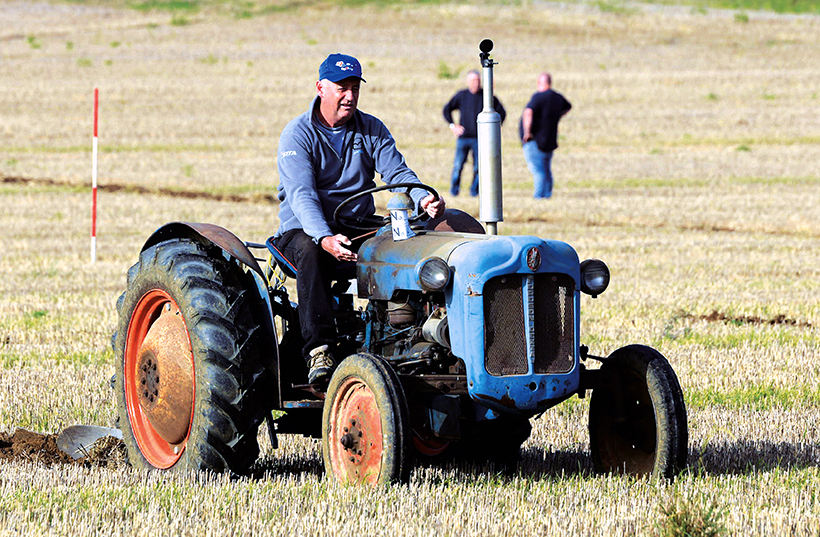
Gary and his 1959 Fordson Dexta with Ferguson two-furrow plough attached; a picture of concentration as he starts the opening split.
This year, the North Kent Ploughing Match (NKPM) took place on 30th September on Gosenhill Farm, Crockenhill, by kind permission of AJ Clements & Sons, and I was there to try my hand in Class 9B: Vintage tractor with mounted plough.
The match was set in the lower valley of the farm, on the outskirts of Crockenhill village, with loamy soil. It’s a farm I grew up around, with all school holidays spent attempting to be helpful there, with tractor-driving being my favourite pastime.
I was encouraged to take part with my 1959 Fordson Dexta and Ferguson two-furrow plough, and drop my ‘novice badge’ once and for all. Having booked my place with organiser David Gunn, I dusted-off the somewhat dull plough and set about having a practice the week before the event.
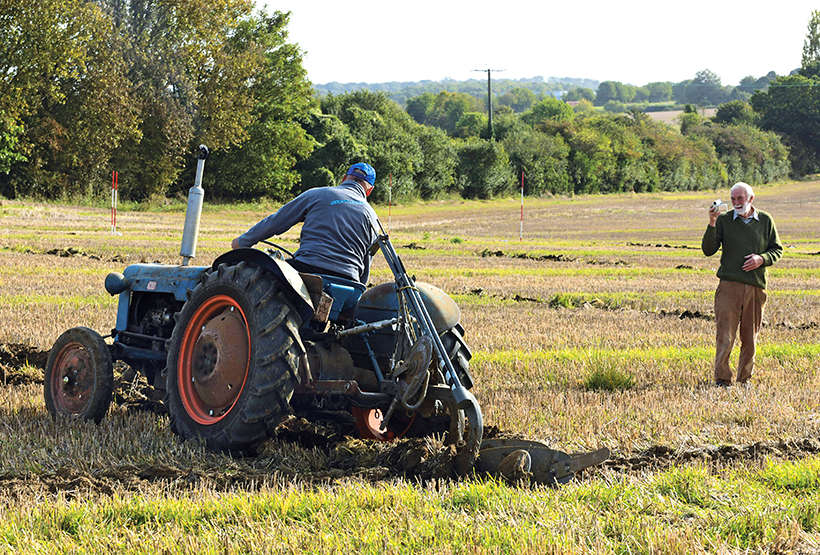
It’s straight but there’s still plenty to do, as Peter Clements records the moment for posterity!
I drive with a false leg operating the clutch, and this does hinder fast progress getting on and off, and tests your fitness, too. Plus, too many clutch applications in one day can make you feel sore, so the minimum of left foot depresses is a bonus!
My Dexta is the first tractor I drove when picking Maris Piper potatoes at the age of seven, so we know each other quite well by now. Peter Clements kindly helped me out by driving my tractor for me during my practice session, while I walked beside the plough – allowing me to adjust as we went.
It proved tough to set up, with a lot of straw and stubble continually blocking the plough and slowing progress. After some time and debate, I removed both the skimmers and discs to allow us at least to shine up the mouldboards, and leave the field turned over, albeit with a fair amount of trash still showing. I left the discs attached, but upturned, to provide as much weight on the plough as I could.
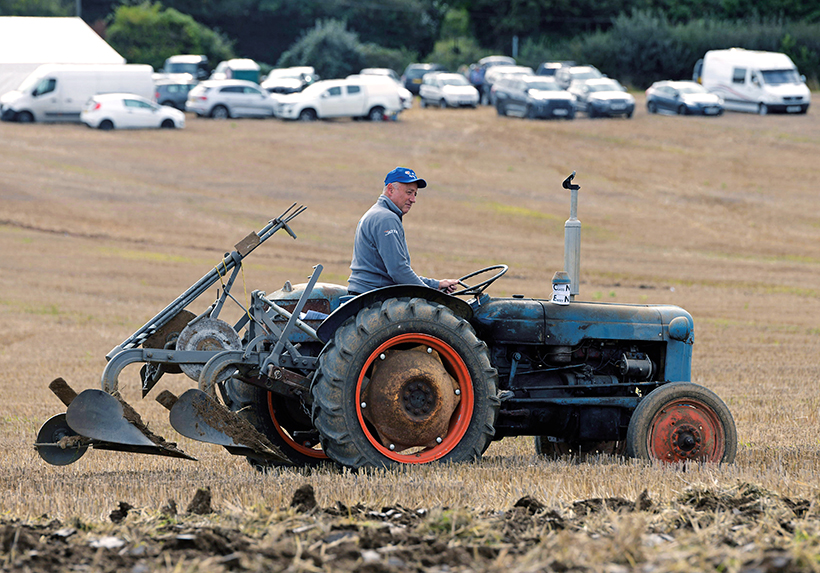
A cursory glance across the other plots doesn’t leave Gary dejected!
There’s a good backstory of the NKPM, with it previously having been held in the same field used this time, back in 1964. Farm owner David Clements took part for the first time at the age of 14 on that day 59 years ago, on his father’s Fordson Major. This time he was competing with a Fordson-based County crawler coupled to a trailed Cockshutt plough.
I was interested to read an article from the 1964 match that recorded AJ Clements senior – David’s grandfather – remembering a previous match taking place there in 1882, in the same field, when he was six years old!
He said every plough was pulled by a pair of horses and, in those days, 160 pairs of horses would attend, with steam trains dropping off crowds of eager onlookers from London to see their ‘local’ match take place!
The 2023 event had 49 ploughs taking part, with more than a dozen modern ploughs topping the bill, four of which were entered by Hugh Lowe Farms – which produces a wonderful array of soft fruit for the supermarket trade.
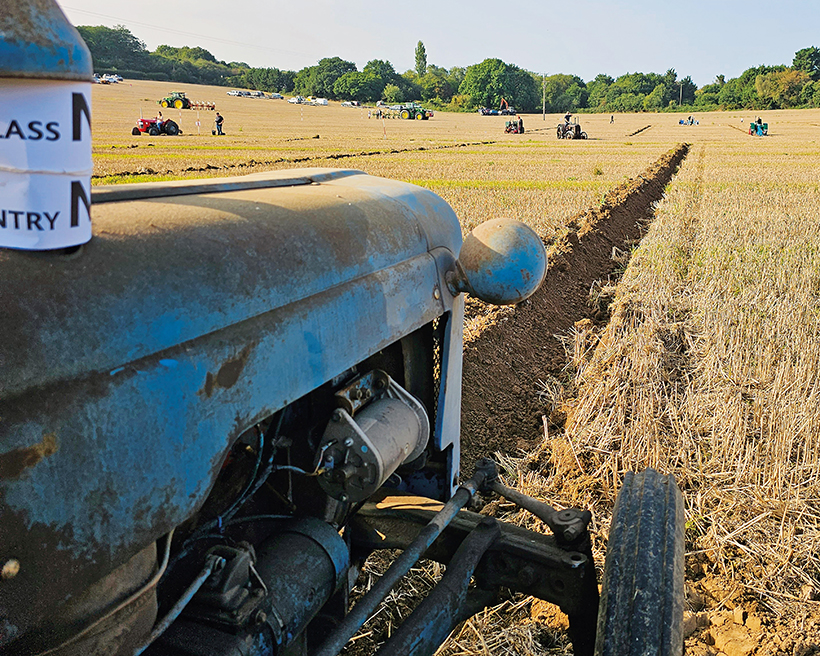
The lack of discs and skimmers means it’s a bit untidy, but blockages left Gary little choice.
Tractors of note were a lovely Caterpillar D2 pulling a four-furrow trailed plough, driven by William Hynard and, alongside this, a superb McCormick International W-4 pulling a Cockshutt two-furrow trailed plough, driven by John McPherson. I also loved seeing the tractors in the commercial class, which included two JCB Fastracs pulling five-furrow reversible ploughs.
Seasoned ploughman Ian Linch won the Classic tractor class with his Massey Ferguson 35X and two-furrow Ransomes TS59, with the plough-off seeing Ron Bulpitt take overall honours with his John Deere and Kverneland two-furrow combination.
Match day
Match day started with no expectations, which helped calm my nerves. The field was wheat stubble with chopped straw, and the obligatory firm tramlines, and proved a real test for the older, shallow ploughs.
I started last in my group, putting out my sighting poles and happy to watch more experienced plough people show me the way. Having cast my opening split, I looked across the field and it seemed OK – reasonably straight and a good starting point to work from.
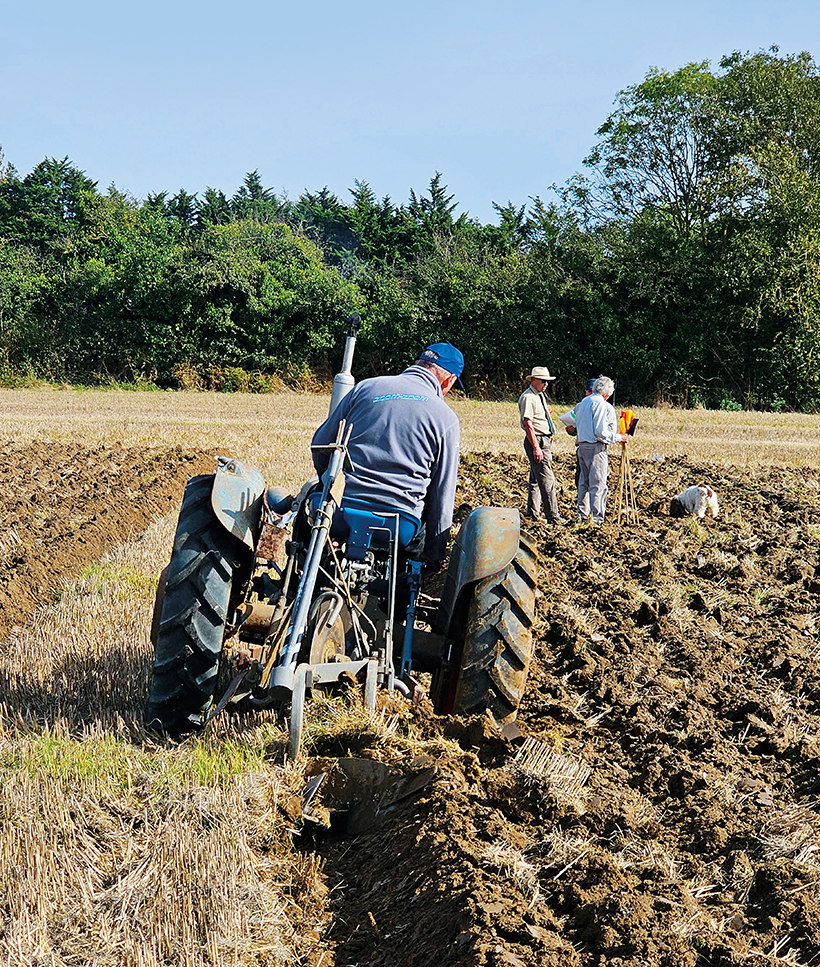
The judges discuss the plot, with Gary ploughing on.
Once the judges had viewed the split, I placed my right front wheel in the centre of the split, marginally left of centre, and wound the levelling box to ensure that the plough was at the correct angle.
On the return I messed the crown up slightly and set a bit too much depth, producing a high front furrow, and no doubt lost myself better marks for a more level crown.
Again, we waited for the judges to mark the crown, made up of 12 furrows, to cast their final say on our efforts. From this point I then drove anti-clockwise, taking the ploughing half from my start, and half from the higher number ‘cant’, or plot, to my left.
I was aware that many of the ploughs at the match were struggling and blocking, as I had found the previous week when practising. My plough, devoid of discs and skims, didn’t block, but did leave a certain amount of trash visible. It was not the best look!
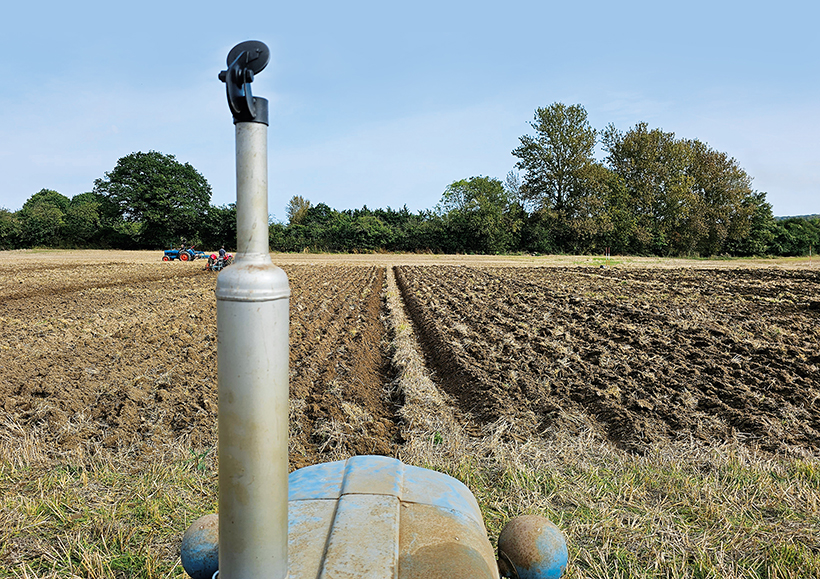
The end is in sight, but this is where it can go badly wrong!
Towards the end of my cant, I could see my opposing furrows were quite parallel, and I felt pleased with my efforts. My finish, and penultimate run down, saw me make the levelling box side a bit longer and take one inch out of the
front furrow.
On the last run, I adjusted the levelling box again to make sure that I was ‘throwing’ the right amount of earth at the lower numbered plot, and had to remember to only leave one wheel mark visible, too. This is crucial if you don’t want to drop points!
My ins and outs were neat, dropping and lifting at just the right time, but I didn’t slow and stop on the outs – leaving bits of soil on the headland, which I know was not ideal.
My wife had kindly come to watch and, pleased to finish, we headed for the tea and rolls kindly laid on in the field, and to chat to friends before heading home. In the middle of my lunch, to my surprise, I was told that I had won my class! Having been told twice, I only then began to trust that the news was correct!
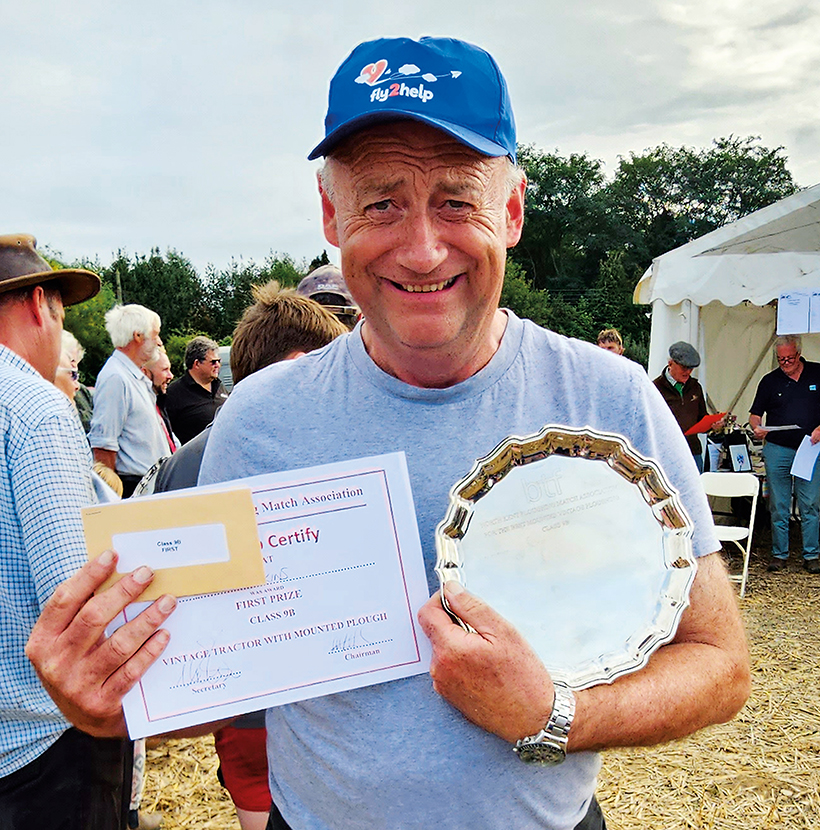
Gary won Class 9B,; a result he had to be told a couple of times before he actually believed it!
All I can say is that if you get the opportunity to have a go at ploughing in a match, do so. It makes you feel very much part of the event, and helps you appreciate the efforts and skill of those involved, both organising and ploughing.
My little Dexta pulls the Ferguson plough exceptionally well, with the power-to-weight ratio pretty much ideal. As a combination for ploughing matches, it’s good – small, simple and not too expensive.
The winner’s certificate will go with my others from sports days at school, as a proud reminder of a bit of success from my past!
This feature comes from a recent issue of Tractor & Machinery, and you can get a money-saving subscription to this magazine simply by clicking HERE
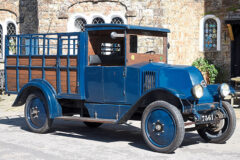
Previous Post
1926 Renault OS discovered 45 years ago, then restored

Next Post
1916 Robey 6hp traction engine heading for refresh



